Hawaii Volcanoes National Park with Kids Tips
Visiting Hawaii Volcanoes National Park with kids can seem intimidating. You may have some trepidation over whether such a visit is dangerous and how to make it enjoyable for the whole family. If you do it right, though, exploring volcanoes on Hawaii’s Big Island is not only safe but also super fun for families. Follow these 15 helpful tips for visiting volcanoes in Hawaii by helicopter and by land.
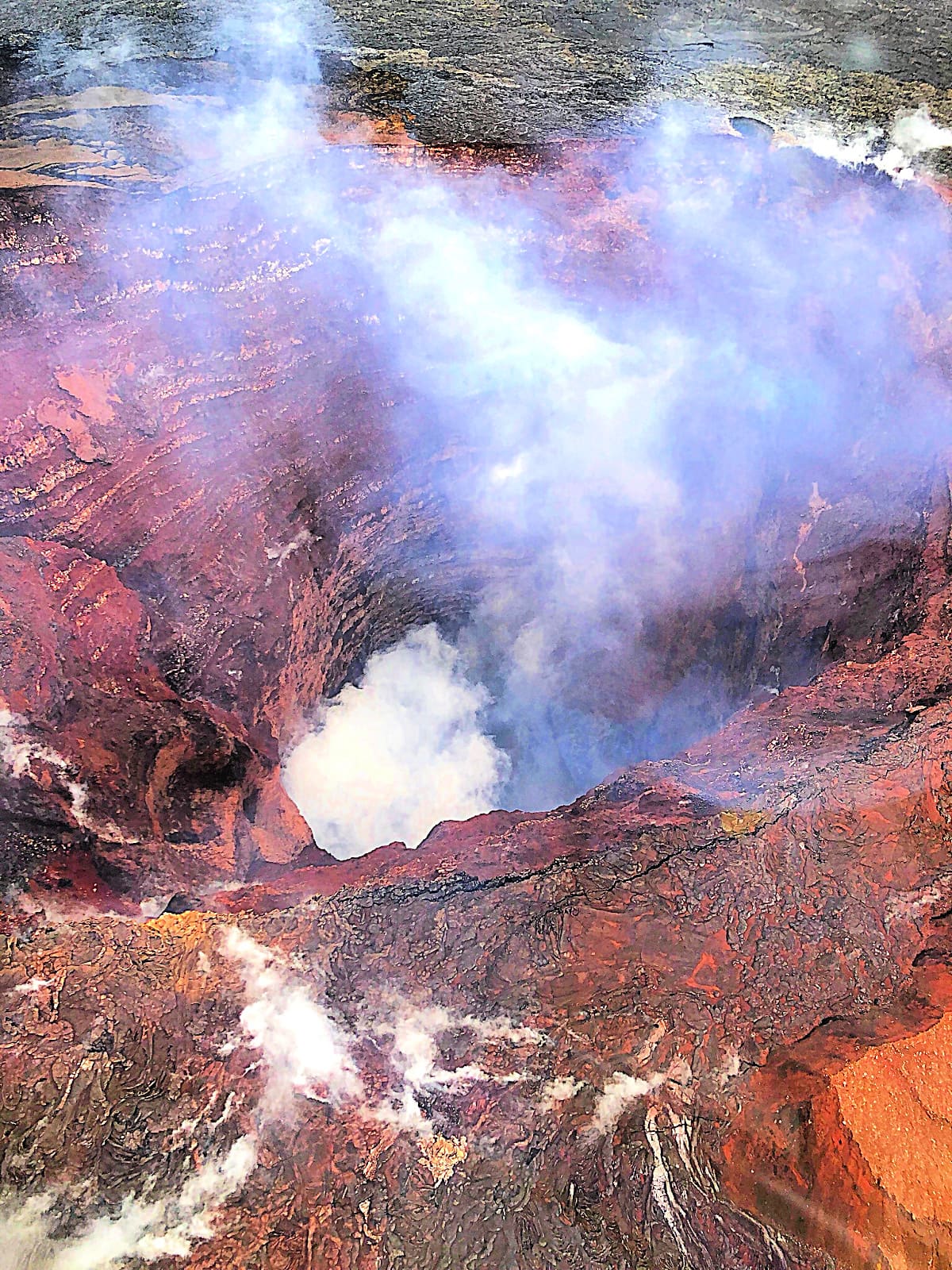
This website sometimes receives compensation, hosted travel, or products related to blog posts. This article may include affiliate links at no extra cost to consumers. As an Amazon Associate, I earn money from qualifying purchases.
1. Choose the right helicopter tour.
A helicopter tour of Hawaii’s volcanoes has long been a bucket list item for me. I almost didn’t go, though. Mostly because it’s expensive. You may be tempted to opt out as well, but it’s worth every cent for such an amazing, once-in-a-lifetime experience!
Typically, there is no age limit to fly in a helicopter (with doors on) so even babies and toddlers can participate. Children ages 2+ must be secured in their own seats in a car seat or approved safety restraint.
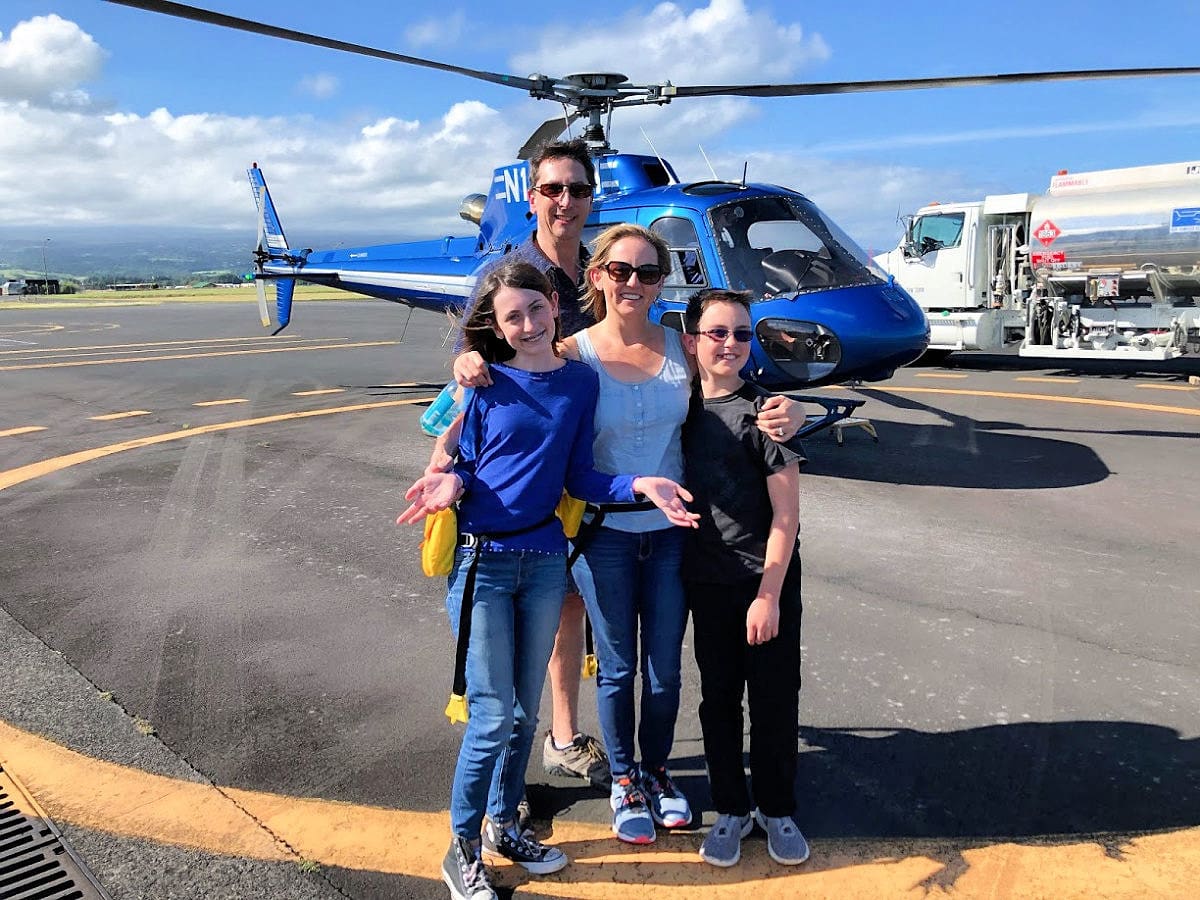
Save money while exploring volcanoes by air and land:
We, like most Big Island visitors, spent the majority of our vacation on the drier and more populous Kona side of the island. Therefore, I was originally considering a helicopter flight from the Waikoloa Heliport to avoid the 2-hour drive to Hilo.
After doing some research, however, I learned that I could save my family hundreds of dollars by booking a helicopter tour from the Hilo International Airport. If you want to save money and you’re interested in exploring Hawai’i Volcanoes National Park by land as well, then I recommend booking a helicopter tour from Hilo.
Save time and splurge on helicopter experience:
If time is of the essence and you’re willing to splurge, then book this amazing tour with Blue Hawaiian Helicopters. It departs from Waikoloa on the Kohala Coast. Although you won’t get the opportunity to hike past the Kilauea Caldera on foot, you will see a lot of the island from above. You’ll even step out of the helicopter at the edge of a freshwater pool, beside a thundering waterfall! (Ages 2+.)
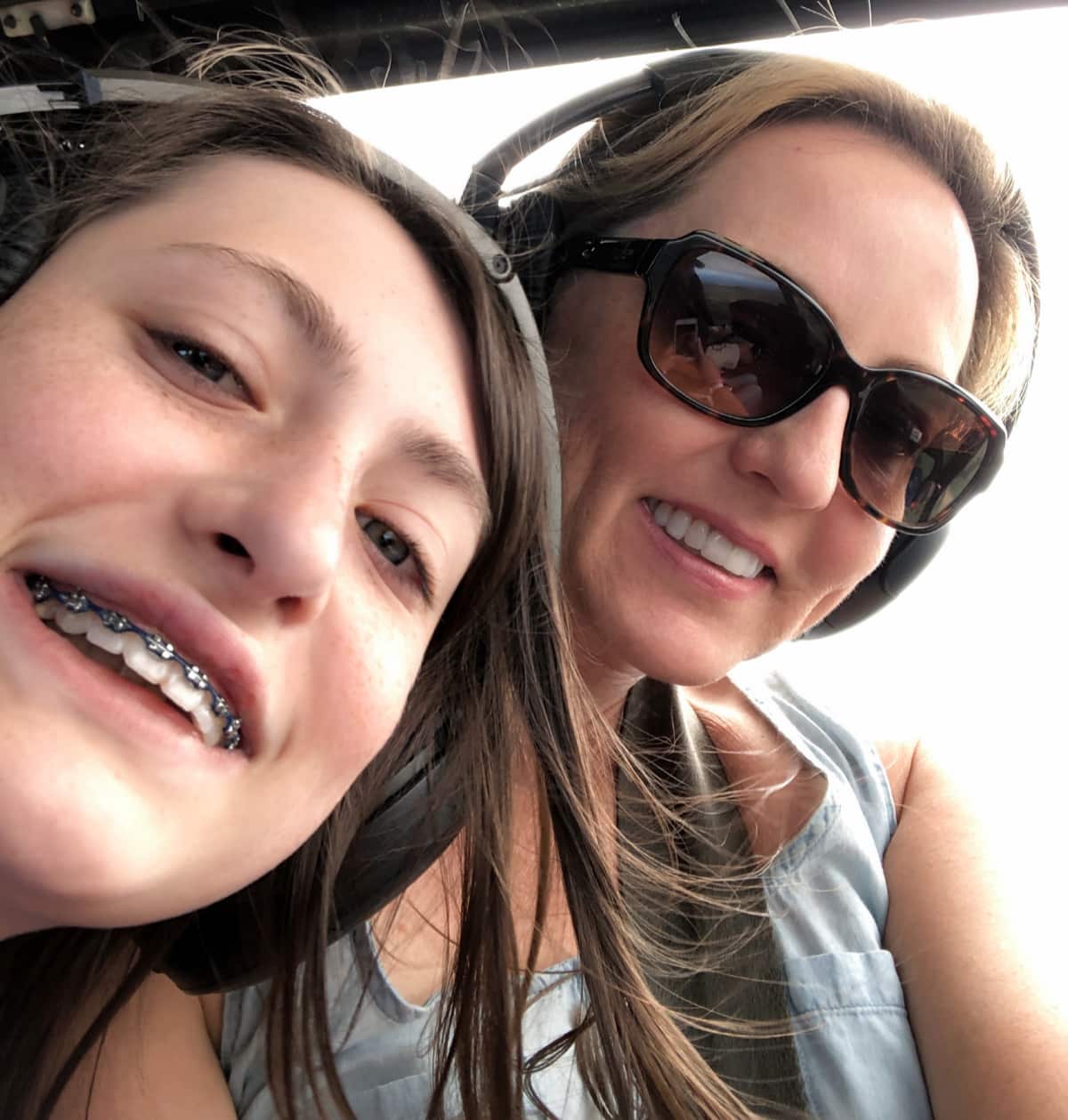
2. Overcome motion sickness.
A snorkeling and boating tour the day prior to our helicopter flight left my teen daughter and me worried about motion sickness. After much encouragement from our Facebook fans (thank you!), we decided to go for it. I’m so very glad we did. We felt a tad woozy afterward, but it was manageable, and we both agreed well worth it.
This was my second helicopter flight. (The first was in Sevierville, Tennessee.) Both times, I was pleased to experience how much smoother and less nauseating a helicopter ride is compared to a small airplane flight.
Still, taking precautions is smart, especially if someone in your family often suffers from motion sickness. Bring along a nausea-reducing medication like Dramamine and read these motion sickness tips before you go.
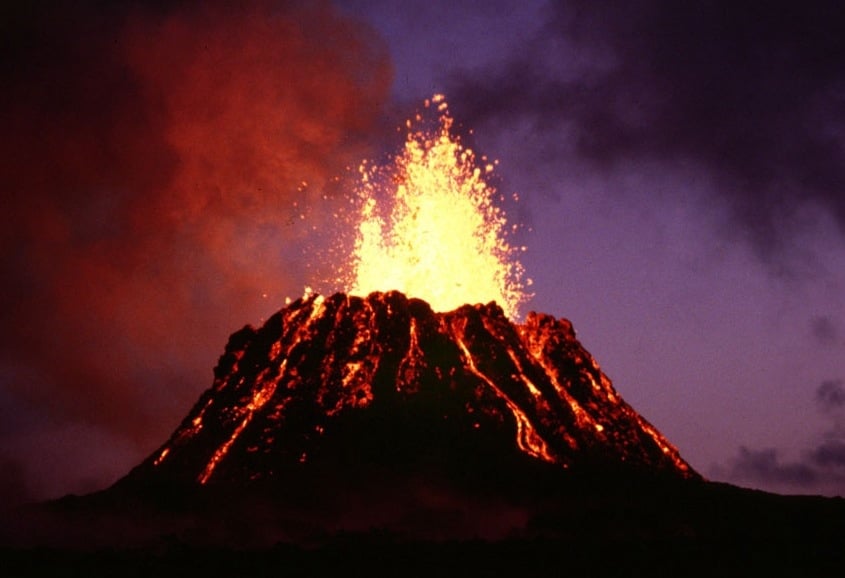
3. Check the lava flow.
During periods of eruption, portions or all of the national park may close, and helicopter flights may be grounded for safety’s sake. Also, expect long delays when lava is flowing and the park is open.
Hawaii’s Mauna Loa is considered one of the world’s most active volcanoes. Chances are, you will get to see some molten lava at Hawaii Volcanoes National Park. Eruptions in 2021, 2022, and 2023 have created a lava lake in Halema’uma’u Crater.
There was no lava to be seen anywhere on the Big Island during my family’s first visit to Volcano National Park. Once the largest lava lake on the planet, Halemaumau Crater at Kilauea’s Caldera did not contain any visible lava during our tour in 2018. That’s because it all poured out when a big magma chamber collapsed, causing a 3-month-long lava flow. This also caused the crater to grow significantly in size. Halemaumau Crater at Kilauea’s Caldera is now about three times as big as it was before the collapse!
Check the National Park System website to learn about volcanic activity in Hawaii.
4. Appreciate current conditions at Hawaii Volcanoes National Park.
Even if you don’t get to see active lava flow, the national park still offers plenty of excitement for families.
Because lava was not flowing, our helicopter was able to circle Pu’u ‘O’o. This volcanic cone is part of Kilauea’s eastern rift zone. Until April 2018, Pu’u ‘O’o had been erupting since January 1983. This makes it the longest-lived rift-zone eruption on Earth over the past 200 years.
We were able to peer right into Pu’u ‘O’o from our helicopter seats. This is truly one of the most exciting things I’ve ever done and it’s something my family will always remember. View my YouTube video above to see what I mean!
During our helicopter tour, we also got a chance to see the newest real estate on Earth, created by the 2018 massive eruption and subsequent summit collapse. The Lower Puna eruption lasted four months. The lava cooled to form volcanic rock, creating 875 acres of new land in the Pacific Ocean.
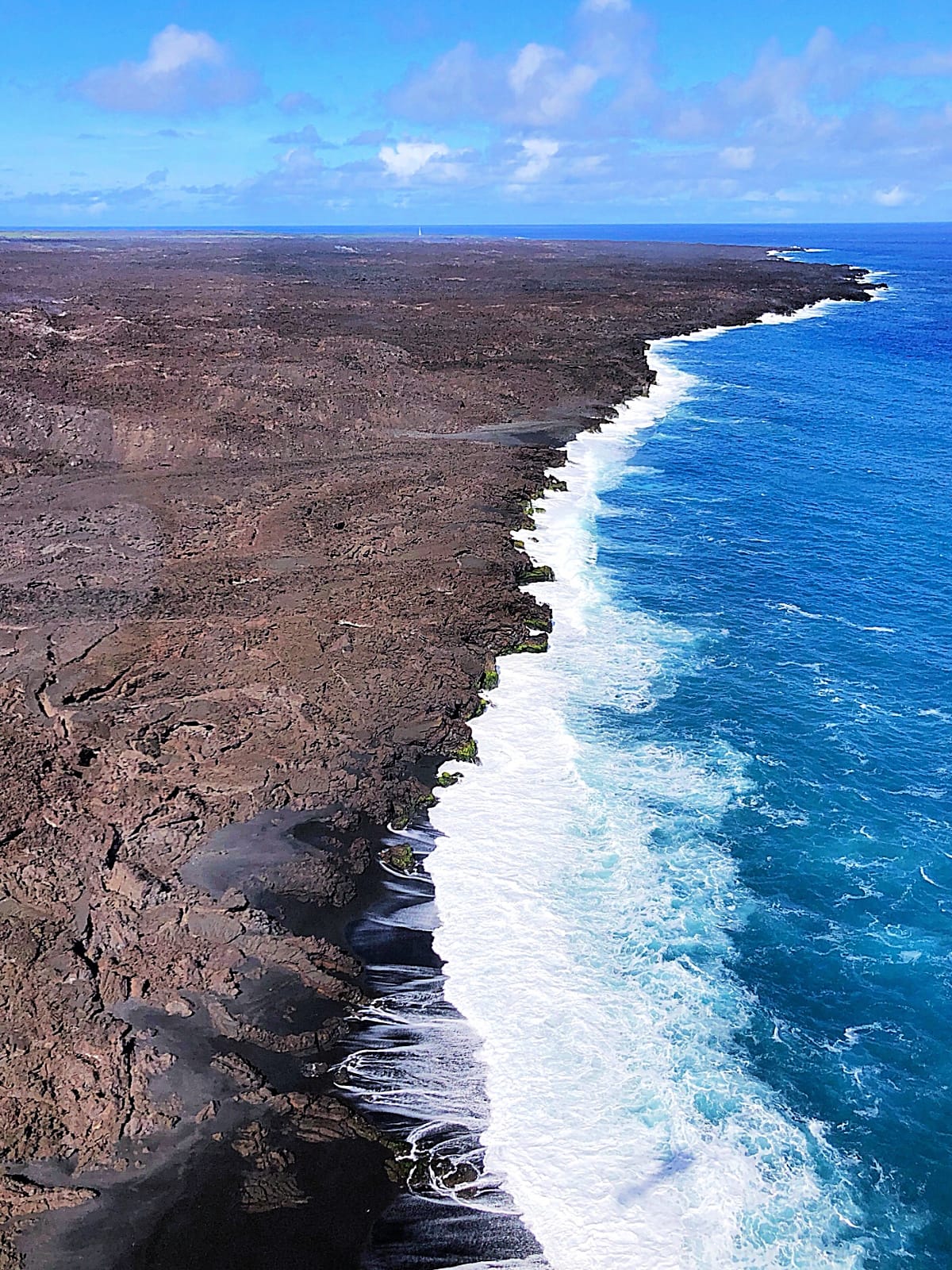
5. Respect the power of Hawaii’s volcanoes.
Over 700 houses were destroyed by the 2018 volcanic activity on Hawaii. Our helicopter pilot, Darryl, told us that most of the houses that were destroyed are in a Zone 1 area, the most dangerous active volcanic zone.
There are nine lava-flow zones on the islands, with Zone 9 being the least likely to experience volcanic damage. Darryl said that houses in the first zone have a 90 percent chance of volcanic devastation.
Although Zone 1 residents are unable to purchase insurance for their homes due to the high risk of volcanic destruction, they can buy Hawaiian real estate at a bargain rate.
Some of the houses that survived the eruption are second-generation homes. That means the original homes were annihilated years ago and have been rebuilt by the owner’s children or grandchildren.
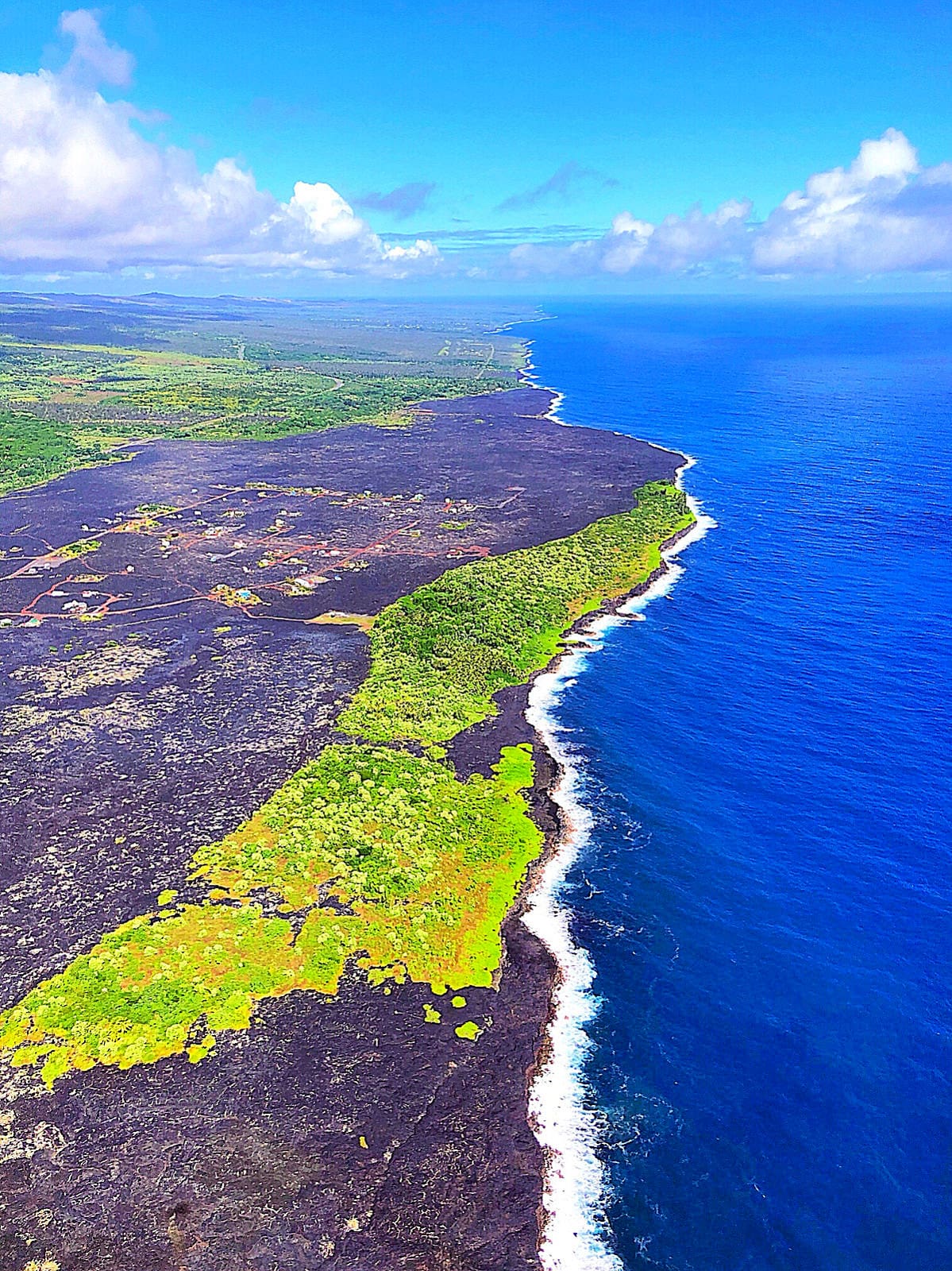
6. Stay safe while exploring Hawaii Volcanoes National Park.
Is it safe to explore active volcanoes in Hawaii with kids?
Jim Bendt, CEO of Pique Travel Design, a travel agency specializing in Hawaii, says in this CNBC article, “Big Island is over 4,000 square miles. The area of the latest eruption covers 10 square miles. Travelers should have no worries visiting.”
Additionally, volcanologists closely monitor activity to provide warnings to residents and visitors. The University of Hawaii Hilo’s website explains, “scientists of the U.S. Geological Survey’s Hawaiian Volcano Observatory (HVO) have instruments that monitor the rift zones 24 hours a day. Before an eruption, the ground inflates rapidly and seismographs record volcanic tremor (underground magma flowing up towards the surface).”
Still, if you’re staying in Zone 1, you should take heed. The University of Hawaii Hilo continues, “Although there is usually an increase in seismic activity and ground deformation for several hours prior to an eruptive outbreak, residents living in remote areas may have little warning and less time to evacuate themselves and their possessions prior to a fast-moving lava flow.”
Most important is to stay on marked trails and overlooks, and swiftly follow any evacuation instructions.
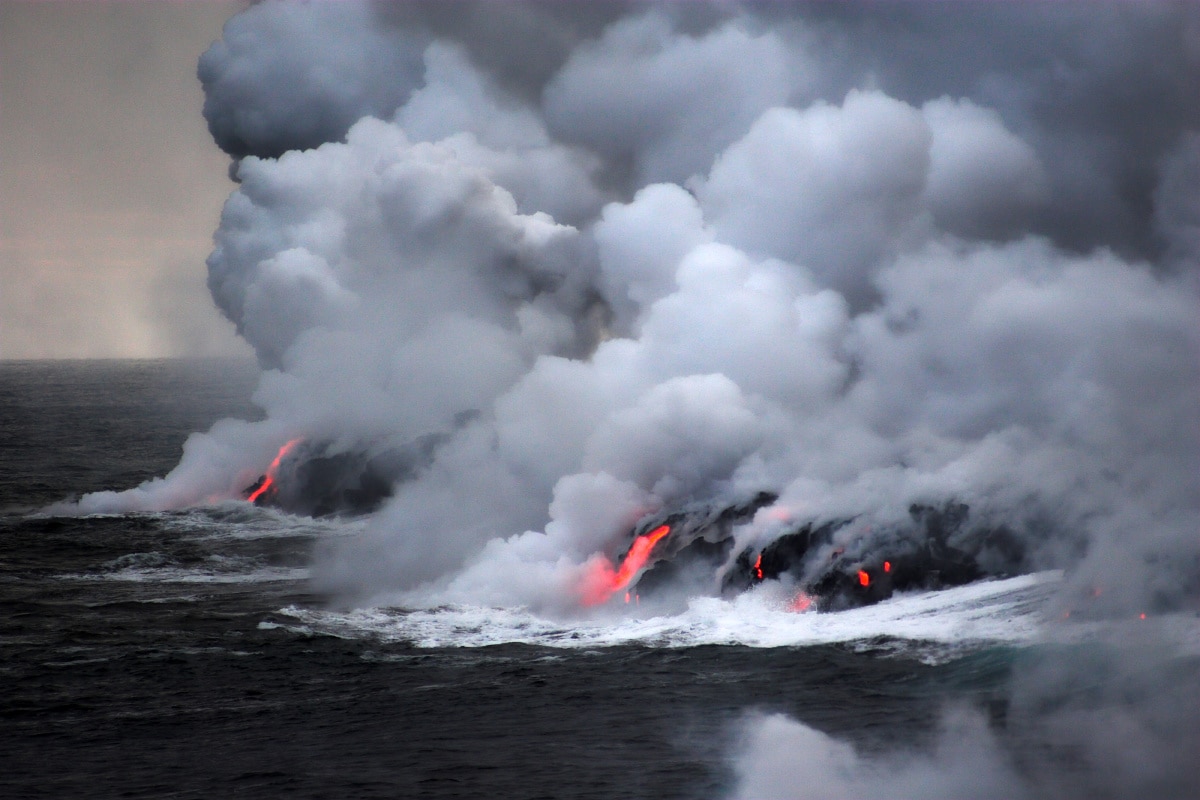
7. Beware of poor air quality.
Due to gases and ash released by volcanoes, air quality in Hawaii Volcanoes National Park can reach dangerous levels. Poor air quality from volcanic sulfur dioxide gas and particulate matter can be detrimental to everyone.
Those with lung conditions, however, should be especially cautious. Don’t forget to bring along an inhaler for asthma sufferers (like my son).
With these air quality dangers, pregnant women and parents of infants and young children may want to consider visiting Hawaii’s volcanoes at a later date, especially during eruptions. Elderly visitors and those with heart problems should also take heed.
Check the NPS’s Air Quality Alert to determine the best time to visit Hawaii Volcanoes National Park with kids.
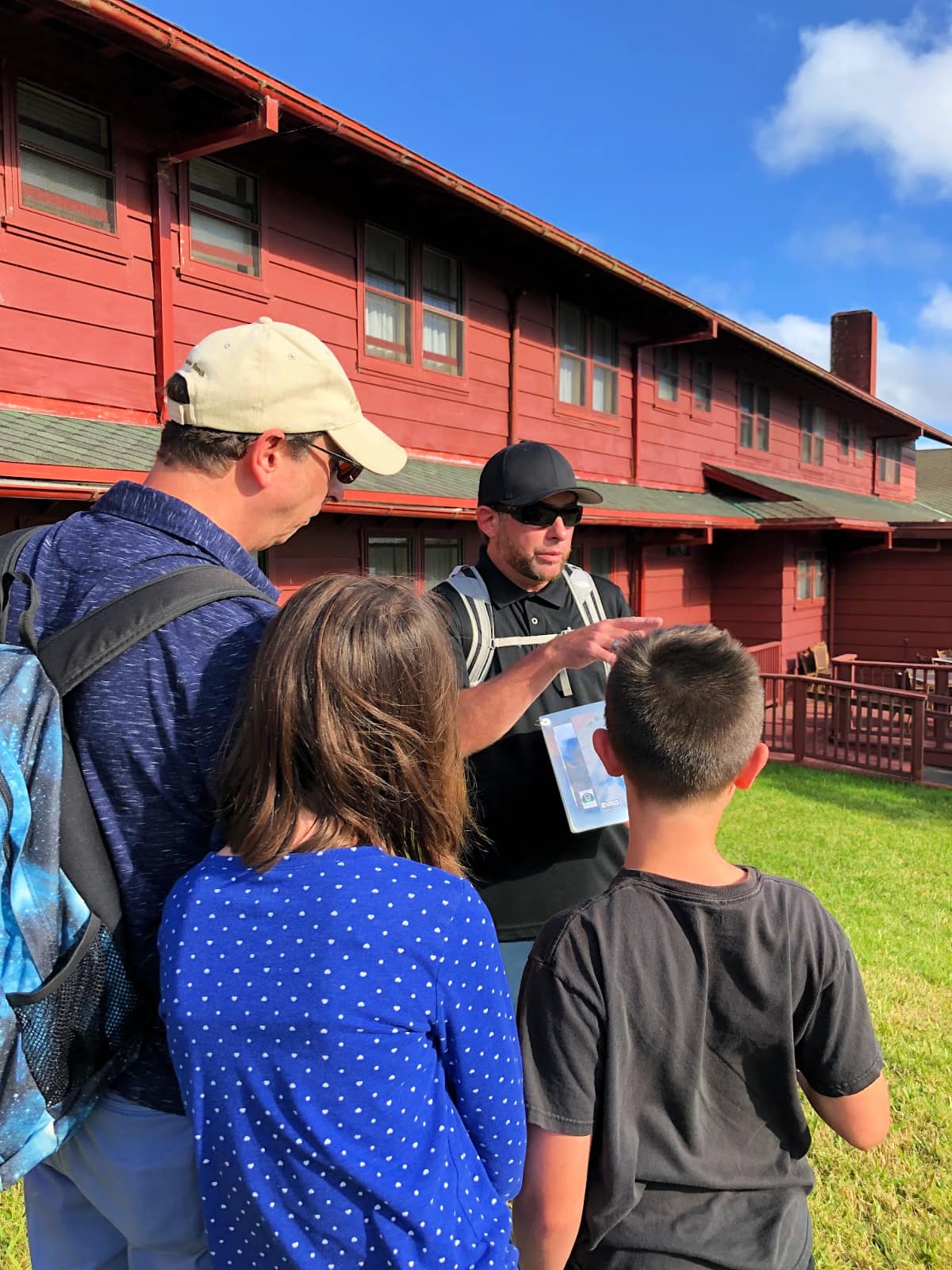
8. Book a Kilauea walking tour with kids.
It is incredible to see Hawaii’s volcanoes from the seat of a helicopter, but it’s also amazing to explore Kilauea on foot.
To get the most out of visiting Hawaii Volcanoes National Park with kids, I highly recommend booking a Private Tour with Kilauea EcoGuide. Owner and lead guide, Erik Storm, promises that all the company’s guides modify their tours to meet their audience’s needs. This means keeping things interesting for children and teens, too.
Using easy-to-follow graphics, Erik explained how volcanoes form, why they erupt, and the cause of recent lava flows on the island. He blended lessons about the history and culture of the Hawaiian Islands with science to keep us all captivated. Plus, since it’s a private tour, we could also ask all the questions we wanted.
Our family took in views of Kilauea’s Caldera and walked past steam vents, with clouds arising from the earth’s molten center. We also learned about Hawaii’s most powerful god, Pele, the god of Mauna Loa and all volcanic activity on the island.
Exploring this World Heritage Site with an expert in Hawaiian culture and geology was so much more meaningful than it would have been to wander around on our own. This is especially true since the Thomas A. Jaggar Museum closed due to instability from the thousands of seismic events that occurred in 2018.
This museum once housed geological and cultural exhibits focused on the study of volcanoes and Hawaii. It is set to be demolished.
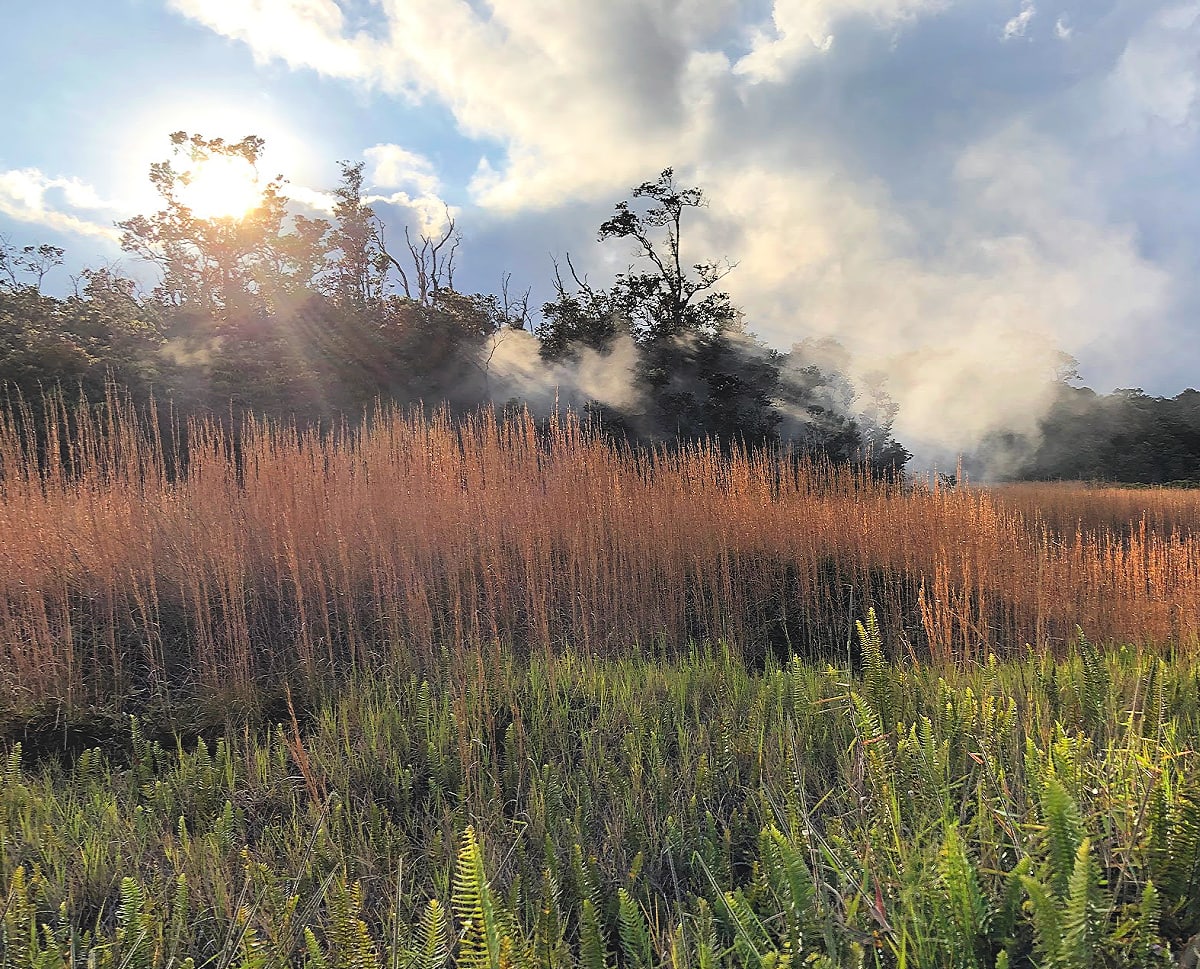
9. Break up explorations to keep kids interested.
Kilauea EcoGuides is happy to break the tour into more easily digestible chunks for families with kids. So, if you’ll be staying on the Hilo side of the island for a few days, I recommend asking if you can do half of the tour one day and the other half the next day.
Choose either a 3-hour or a 6-hour tour. Unless your kids are crazy about volcanoes, the shorter tour is probably sufficient for families.
Book your private Volcanoes National Park tour now!
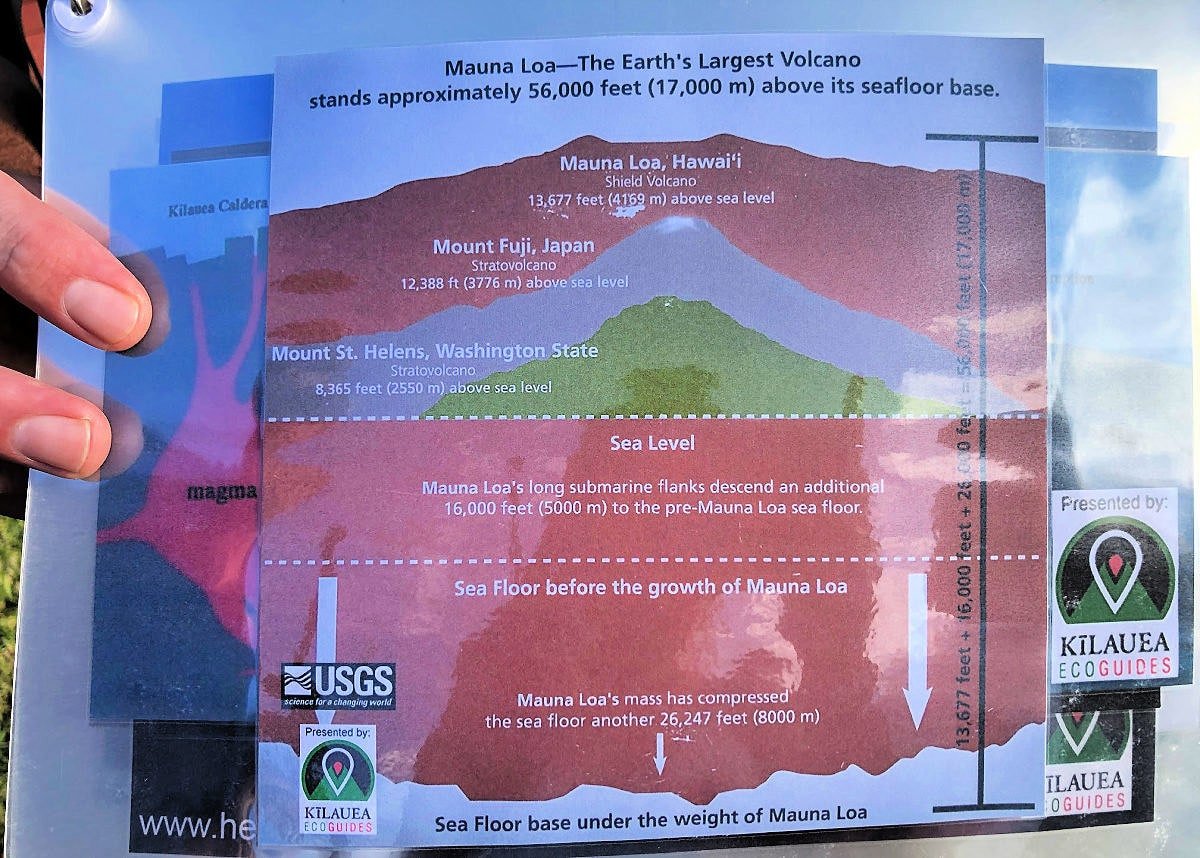
10. Go to the Kilauea Visitor Center.
Thankfully, today you can visit the Kīlauea Visitor Center near the park entrance. Especially if visiting the national park on your own, then the visitors center should be your first stop. It’s located on the right side near the park entrance.
Park rangers and volunteers will be happy to provide tips for the best way to explore the park. They will give recommendations for hiking trails, scenic drives, and other main attractions.
Plus, the visitor’s center offers a gift shop, something my kids always like to peruse at national parks. This is a good place to pick up souvenirs like plush toys, educational games, and collectibles. Best of all, sales benefit the National Park System.
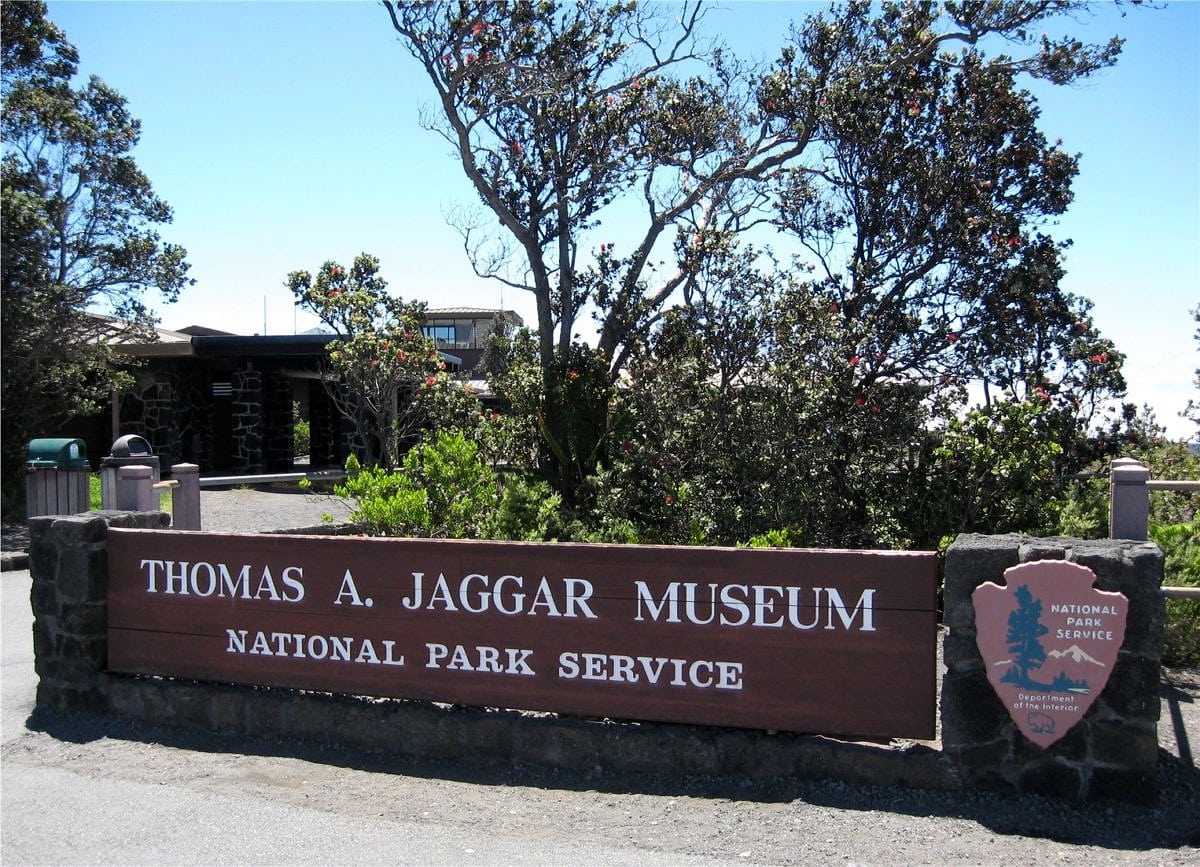
11. Participate in the Junior Ranger Program.
Make Hawaii Volcanoes National Park more fun for kids with the Junior Ranger Program. Pick up your Junior Ranger Booklets at the visitors center. Activities include a scavenger hunt, coloring book, and arrowhead-making craft. Kids ages 7 to 12 can show their completed workbooks to earn a Junior Ranger sticker.
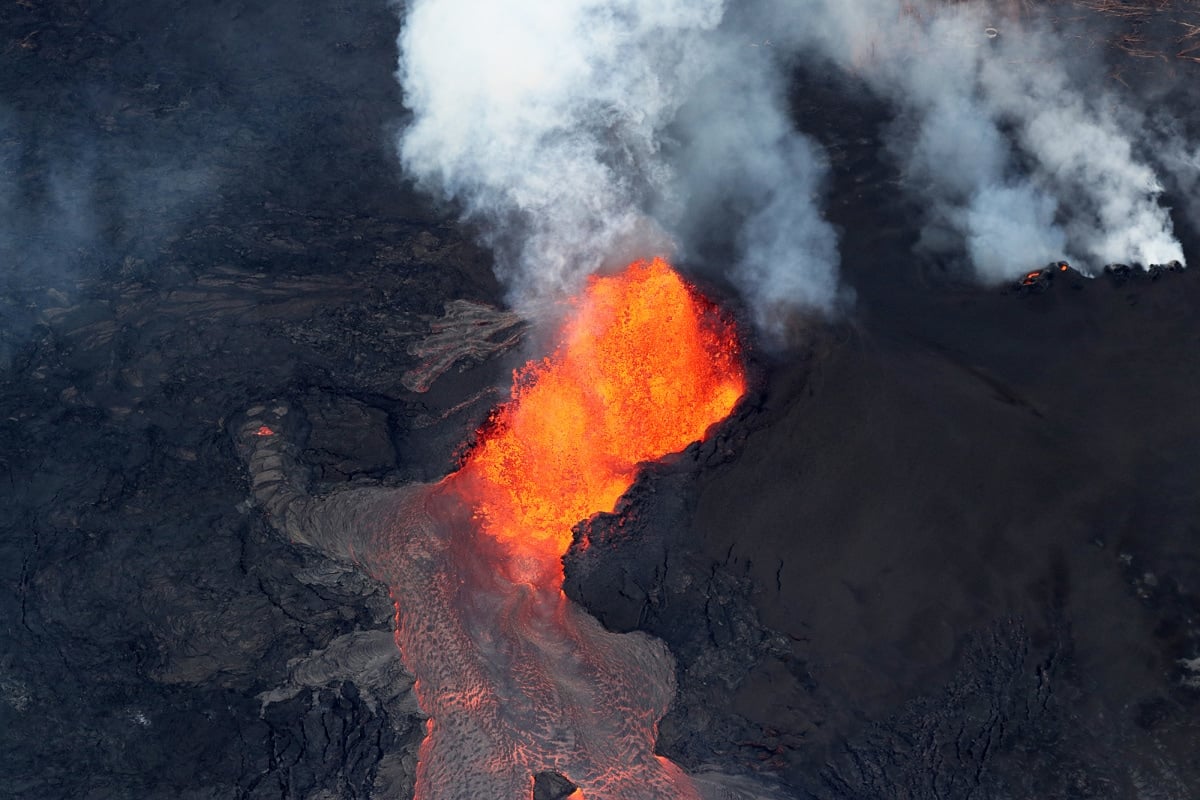
12. Dress appropriately to explore volcanoes.
Dress in layers since the temperature at the top of Kilauea can be 12 to 15 degrees lower than at sea level. You should also wear comfortable walking or hiking shoes with tread for exploring trails.
Bring along rain gear, too, like ponchos and umbrellas. My family was lucky to visit Volcanoes National Park on an unusually dry and clear day. Keep in mind, though, that it typically rains 300 days per year in the park.
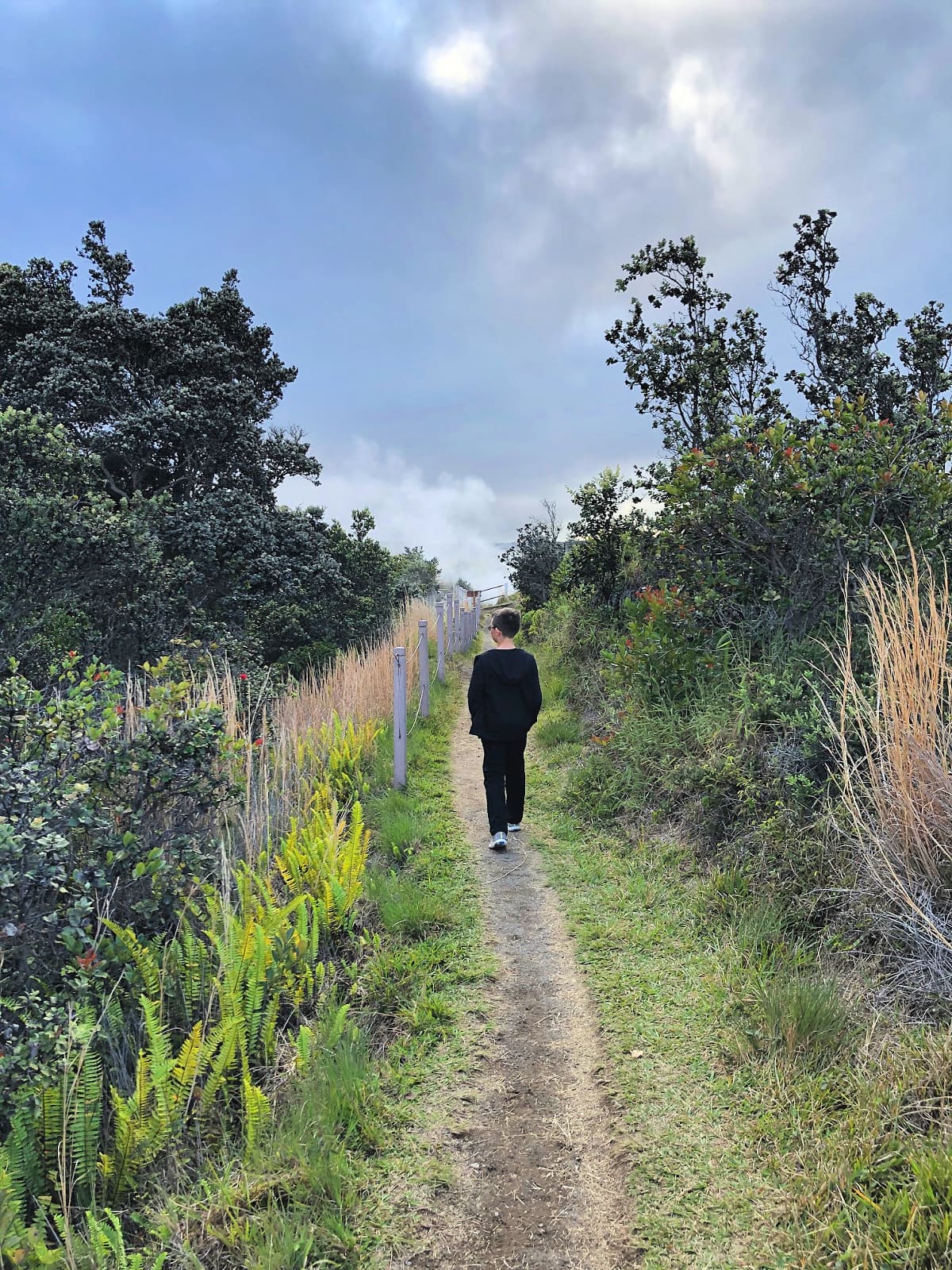
13. Plan ahead for meals and snacks.
Keep in mind that there aren’t a lot of dining options inside Hawaii Volcano National Park. Therefore, you may want to pack snacks and a meal for your visit. Packing food and drinks also saves money on this expensive island.
My family picnicked at Queen Liliuokalani Gardens in Hilo before our helicopter ride. With lots of picnic tables and zero entry fees, this Japanese-style botanic garden makes a beautiful and convenient spot for a meal.
Erik, our walking tour guide, recommends the following restaurants in Volcano, Hawaii for families before or after exploring the national park.
- Ohelo Cafe (wood-fired pizzas and fresh local cuisine)
- Eagles Lighthouse Cafe (big sandwiches and other quick bites)
- Kilauea Lodge (full-service menu with a view; reservations recommended)
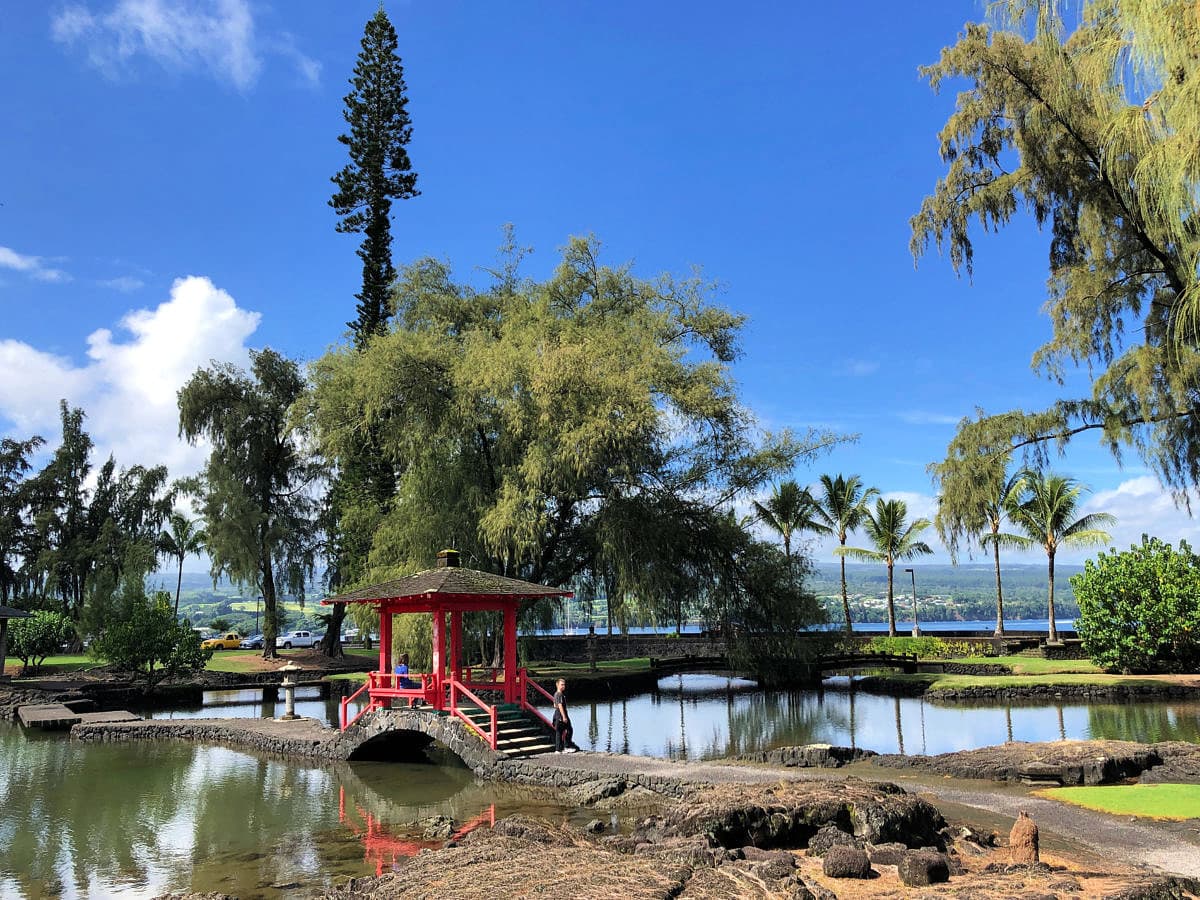
14. Drive during daylight.
Be sure to time your visit to Hawaii Volcanoes National Park so that your drive takes place during daylight hours. This will give you the best visibility during the journey.
The island is home to Mauna Kea, the world’s largest space observatory. Therefore, to enable good star gazing, the island does not have many streetlights. Additionally, the trip from Hilo can be quite foggy.
Check the time of sunset in Hawaii for your travel dates to create a reasonable schedule for your visit. Give yourself plenty of cushion to make the trek, too, especially if you need to drive back to the Kona side of the island after your volcanic adventures.
After driving the two hours with white knuckles gripped on my rental Jeep steering wheel, I wish I’d followed my own advice!
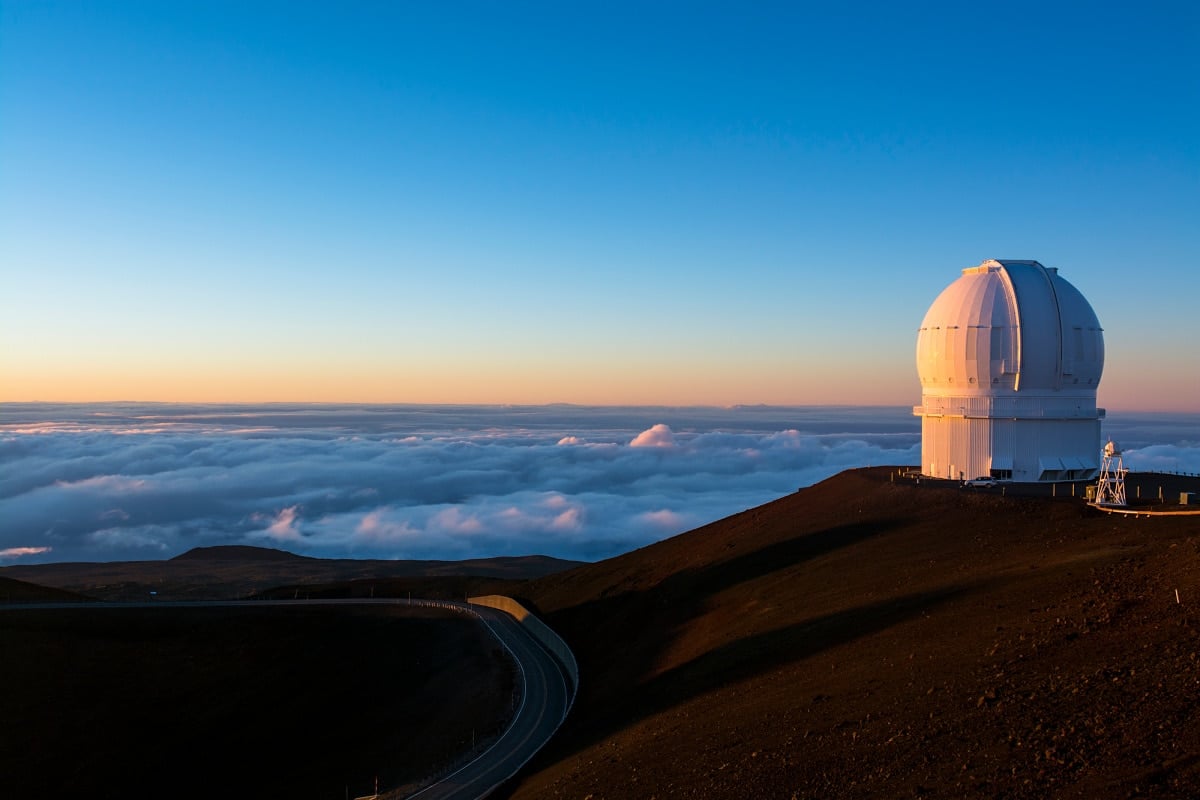
15. Stay on the Hilo side of the Big Island.
Better yet, I recommend spending a few days on the Hilo side of the island instead of doing a day trip.
I expected Hilo to be much more like sleepy little Hana on Maui, home to less than 1,000 residents. Instead, we found a vibrant city, home to 45,000+ residents.
Plus, Hilo boasts some impressive sites. Enjoy waterfalls like Akaka Falls and Rainbow Falls. Explore the stars at Imaloa Astronomy Center. Enjoy plentiful black sand beaches. And Hilo is home to the only tropical zoo in the U.S. — Pana’ewa Rainforest Zoo.
To stay the night within Volcanoes National Park, you have two choices — At the Crater’s Edge (for adults only) or Volcano House (children under 17 stay free).
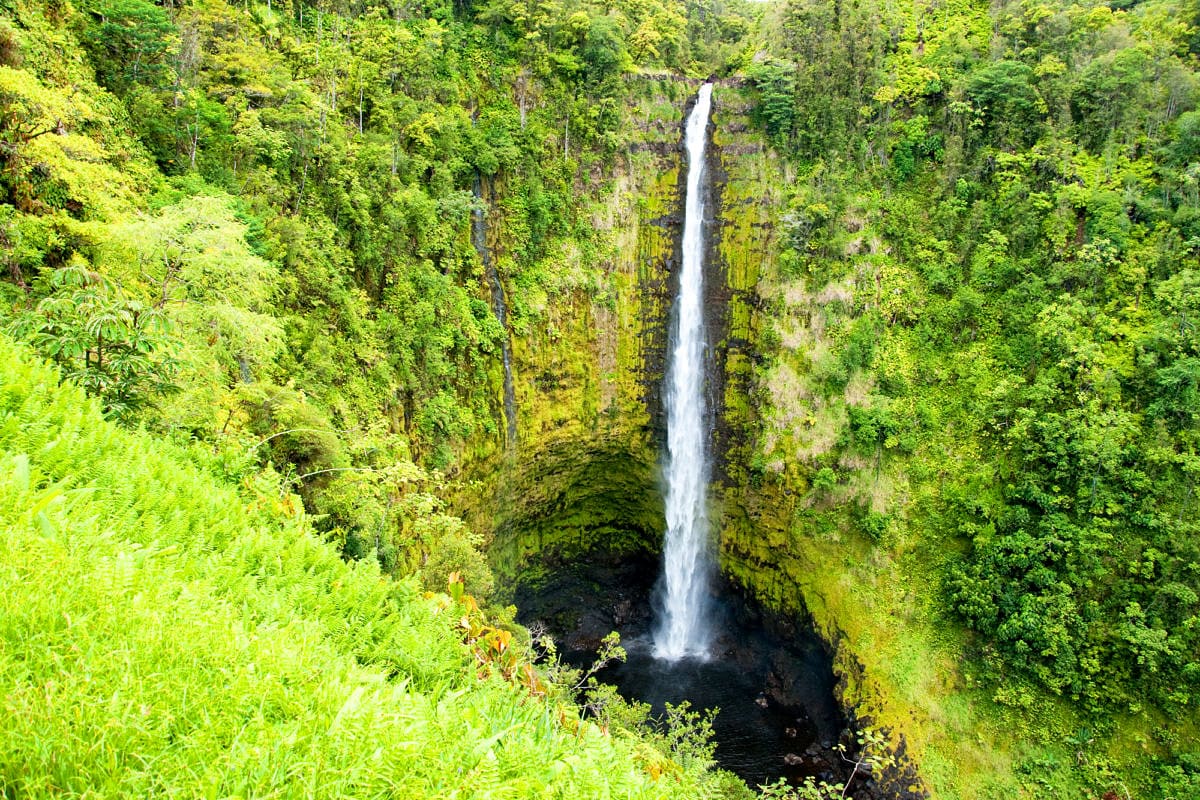
Explore more of Hawaii.
Hawaii is the sixth Hawaiian island I’ve visited. I loved the Big Island so much, I might even say it is the best island to visit in Hawaii.
Discover all the amazing things to do in Maui with kids.
Check out this list of the best hotel pools in Hawaii, recommended by travel experts.
Ready to experience traditional Hawaiian culture, volcanoes, and other natural wonders of Hawaii? Take a look at flight prices with Hawaiian Airlines now! When you fly with Hawaiian, your vacation and the spirit of aloha start the minute you board the plane.
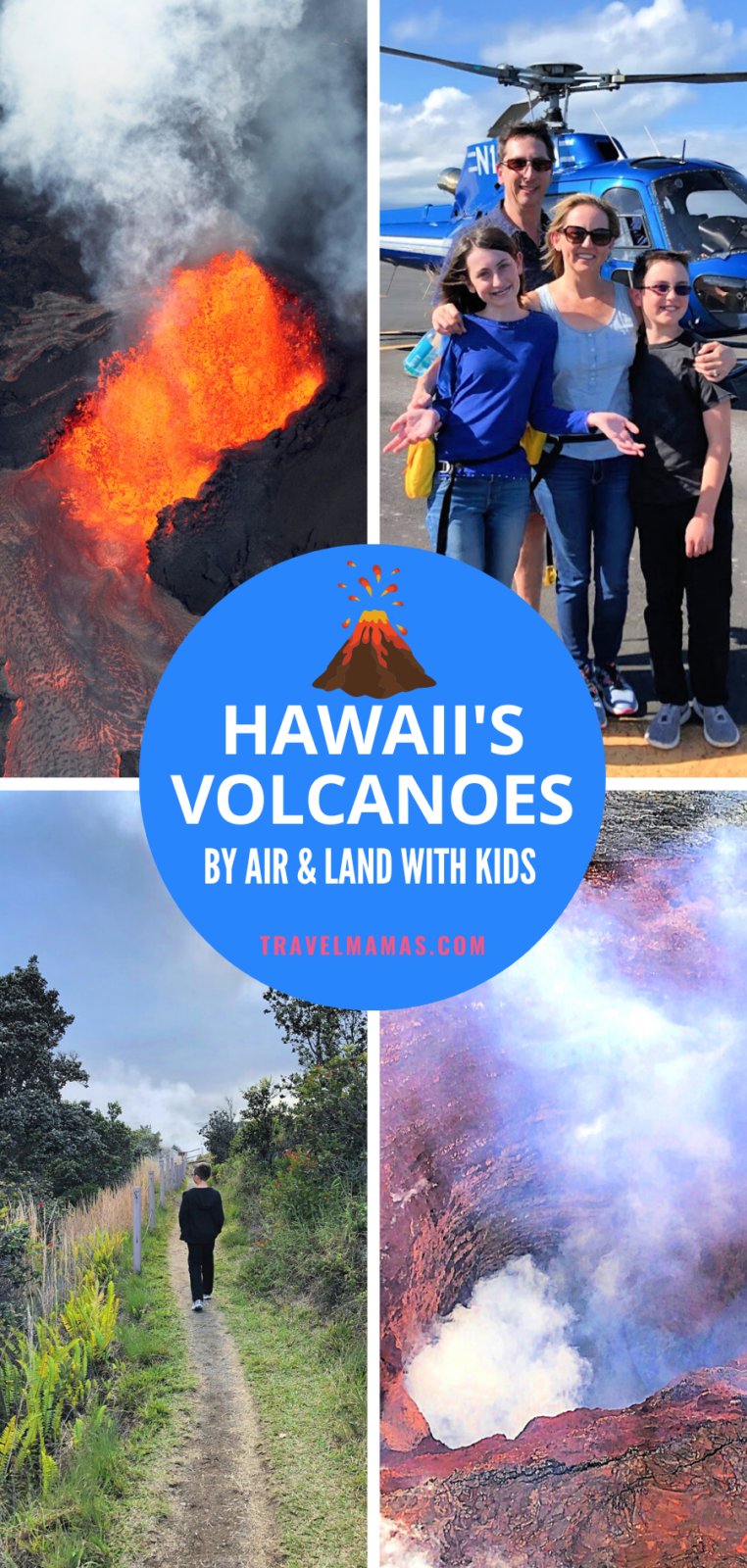
Save these Hawaii Volcanoes National Park tips.
For future reference, be sure to save these tips for visiting Hawaii Volcanoes National Park with kids. Just save the pin above to Pinterest. I hope you’ll follow Travel Mamas on Pinterest while you’re at it!
Do you have any questions or tips for exploring Hawaii Volcanoes National Park with kids? Let us know in the comments below.
A Note from The Travel Mama: I received a small media discount on our helicopter tour from TripAdvisor and our walking tour was hosted by Kilauea EcoGuide. We paid full price for everything else during our visit to the Big Island. All opinions are mine, as always. This story was originally written in 2018 and was updated in 2023 to reflect changes to the national park.

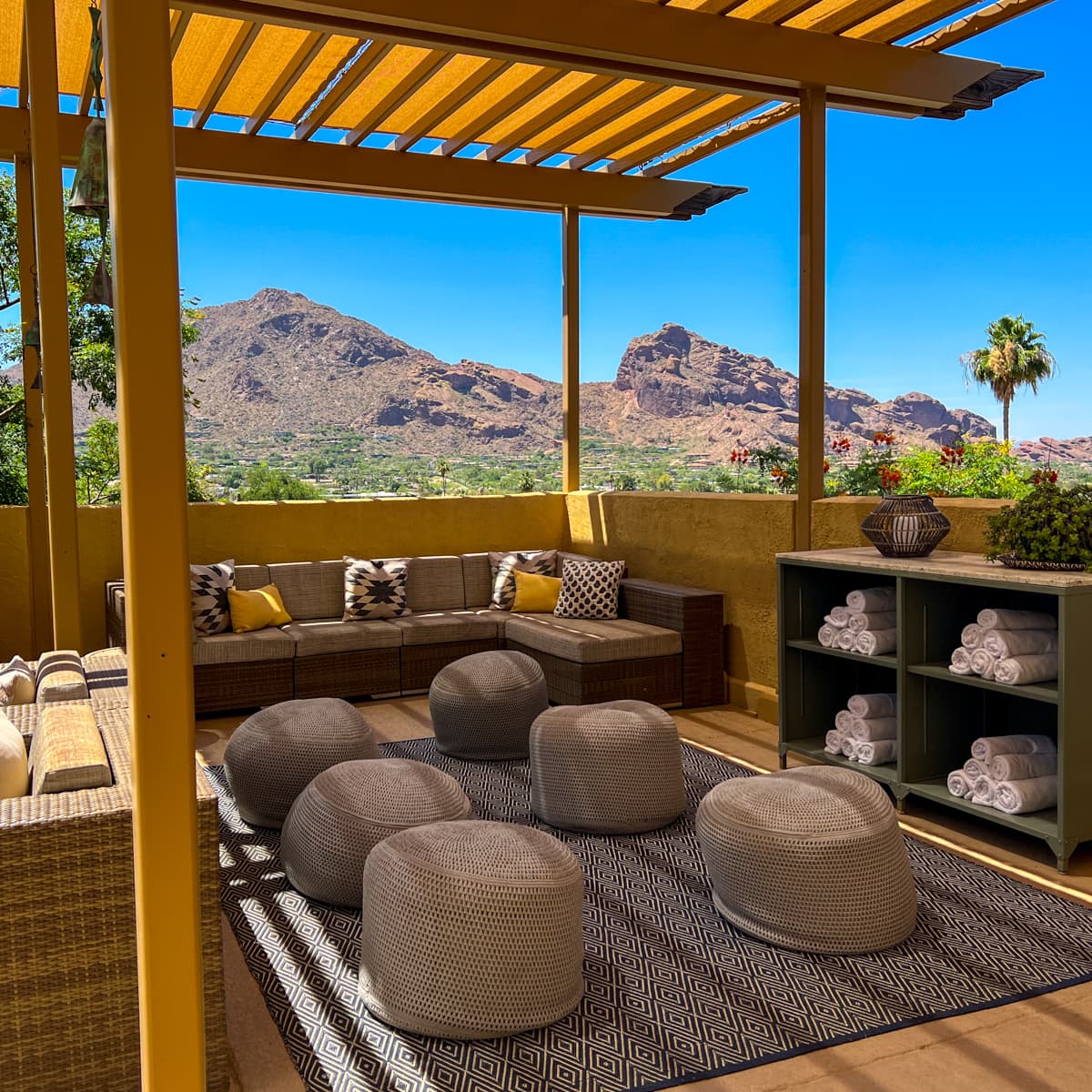
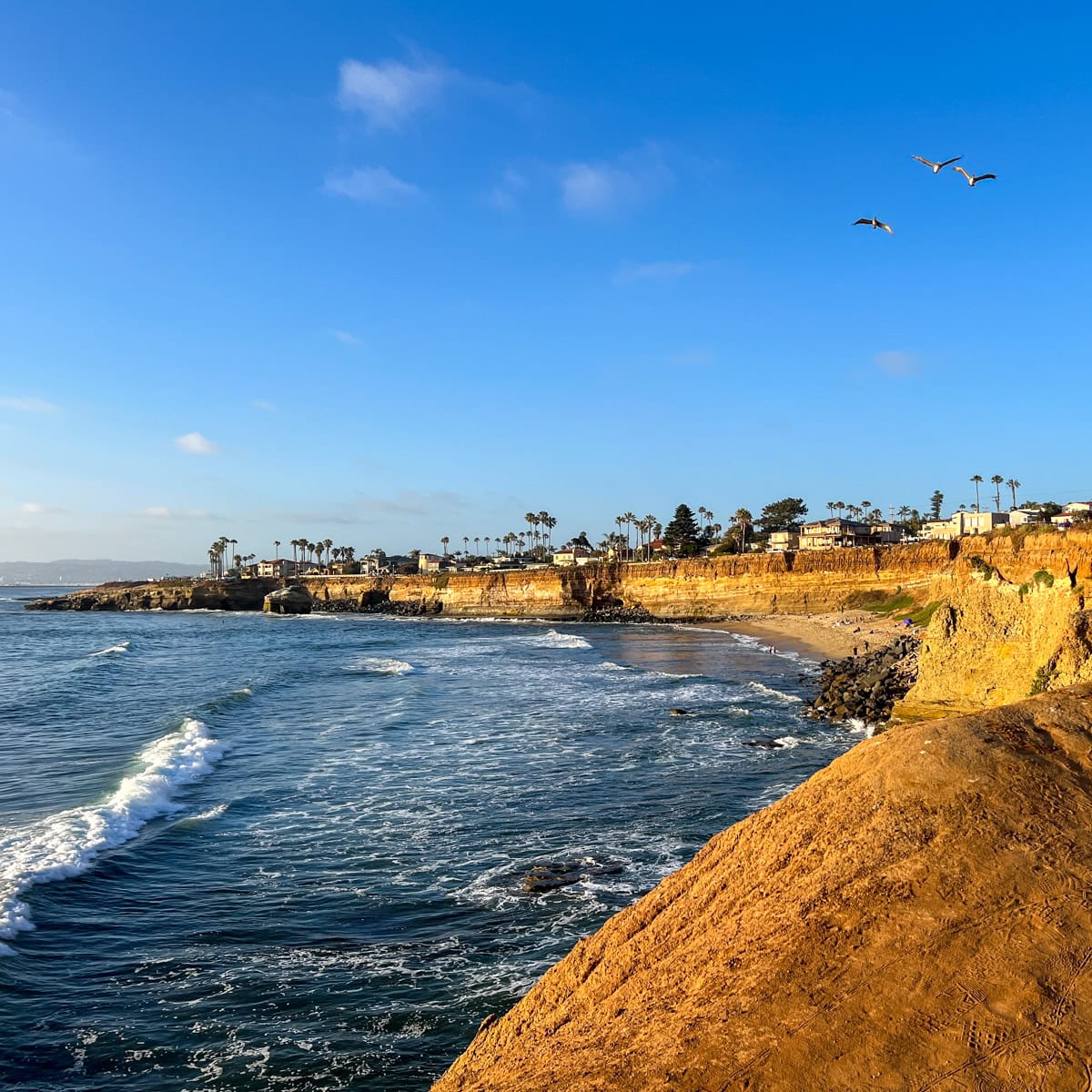
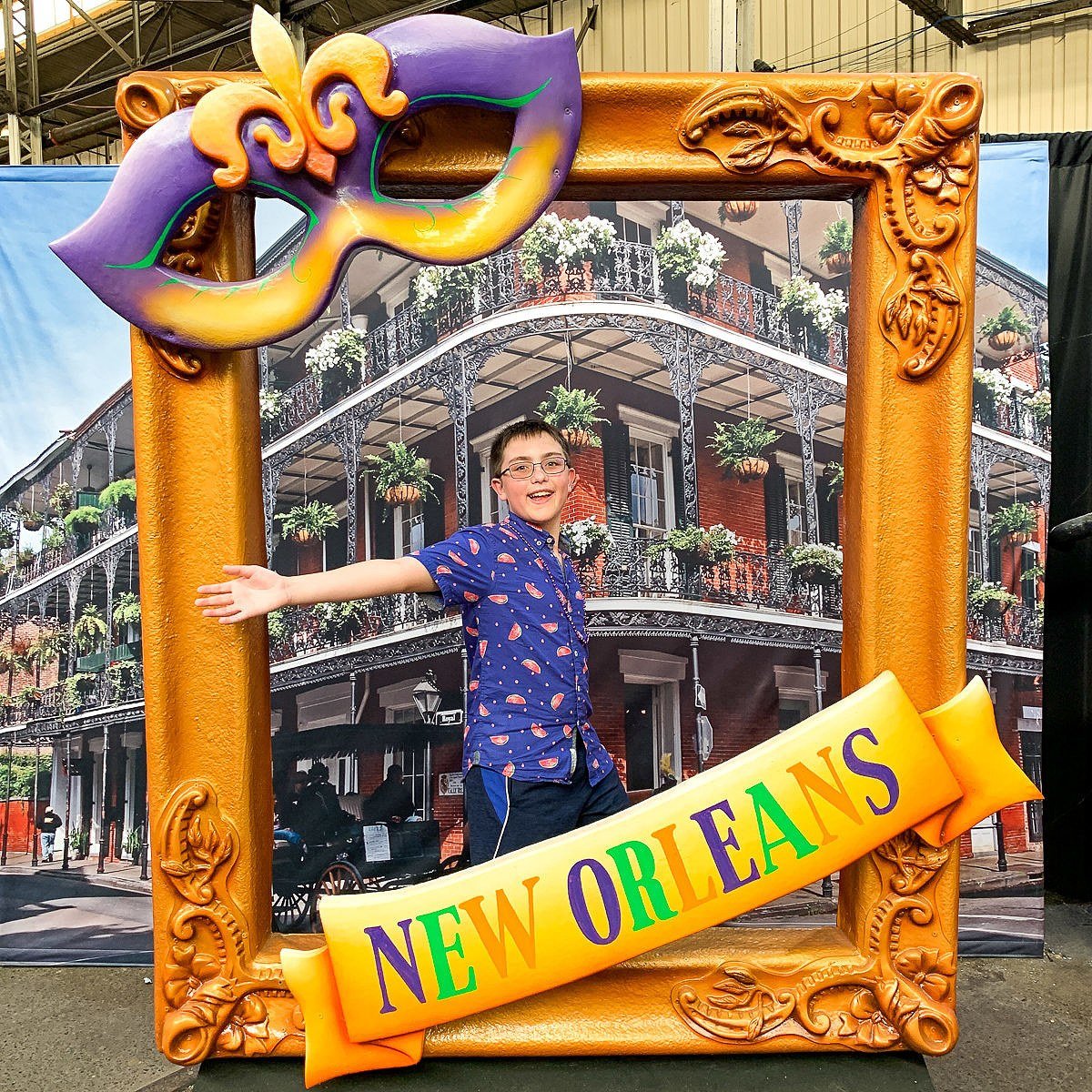
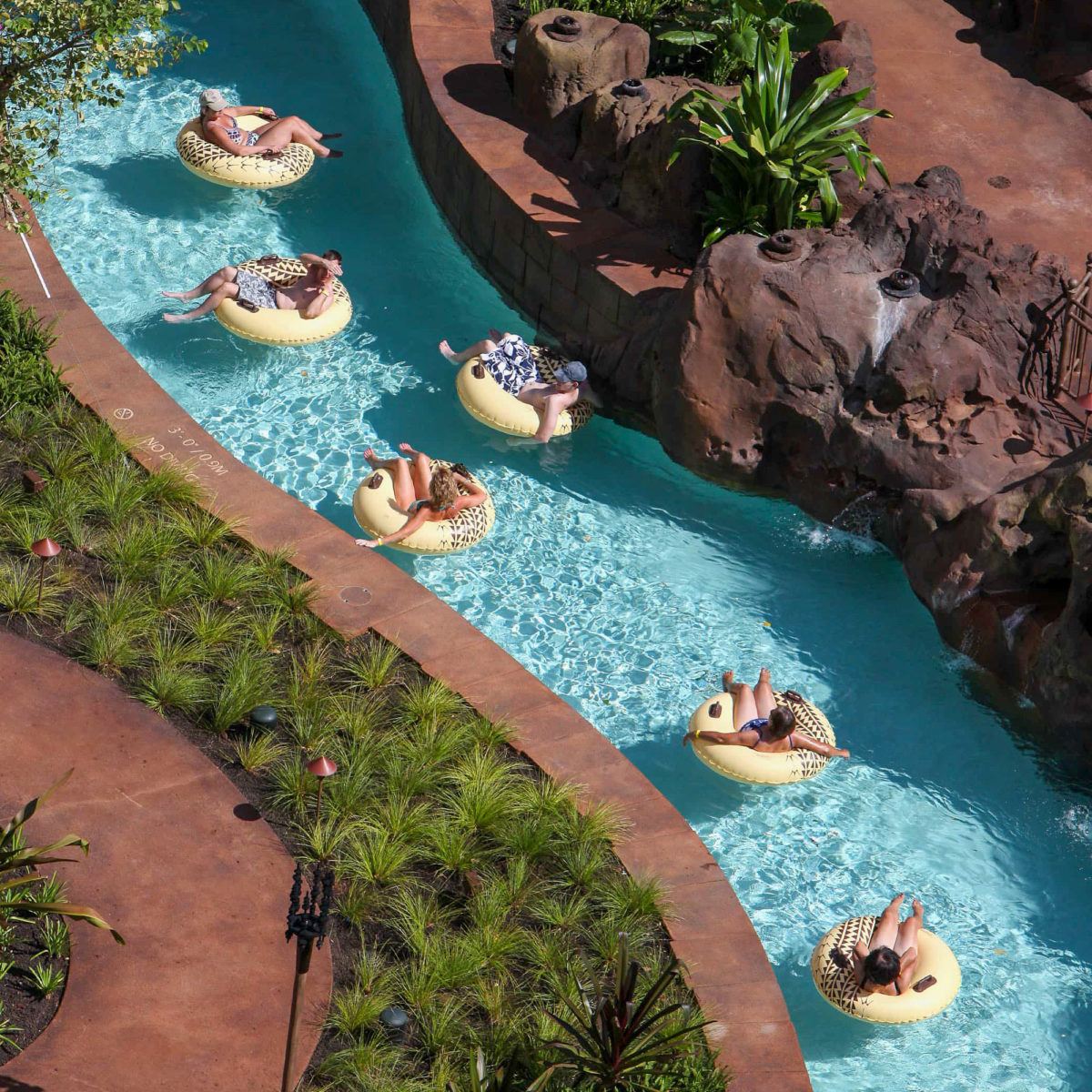
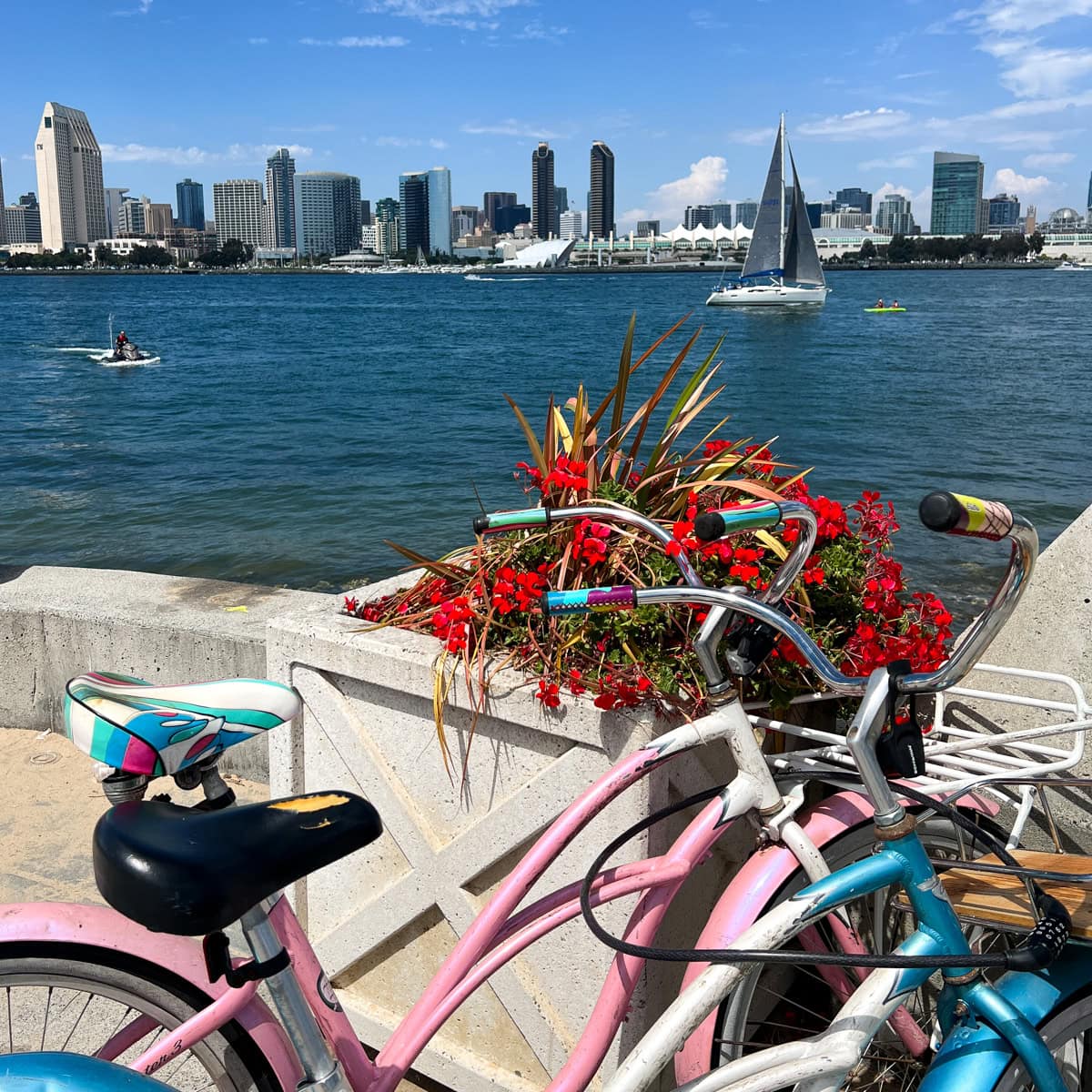
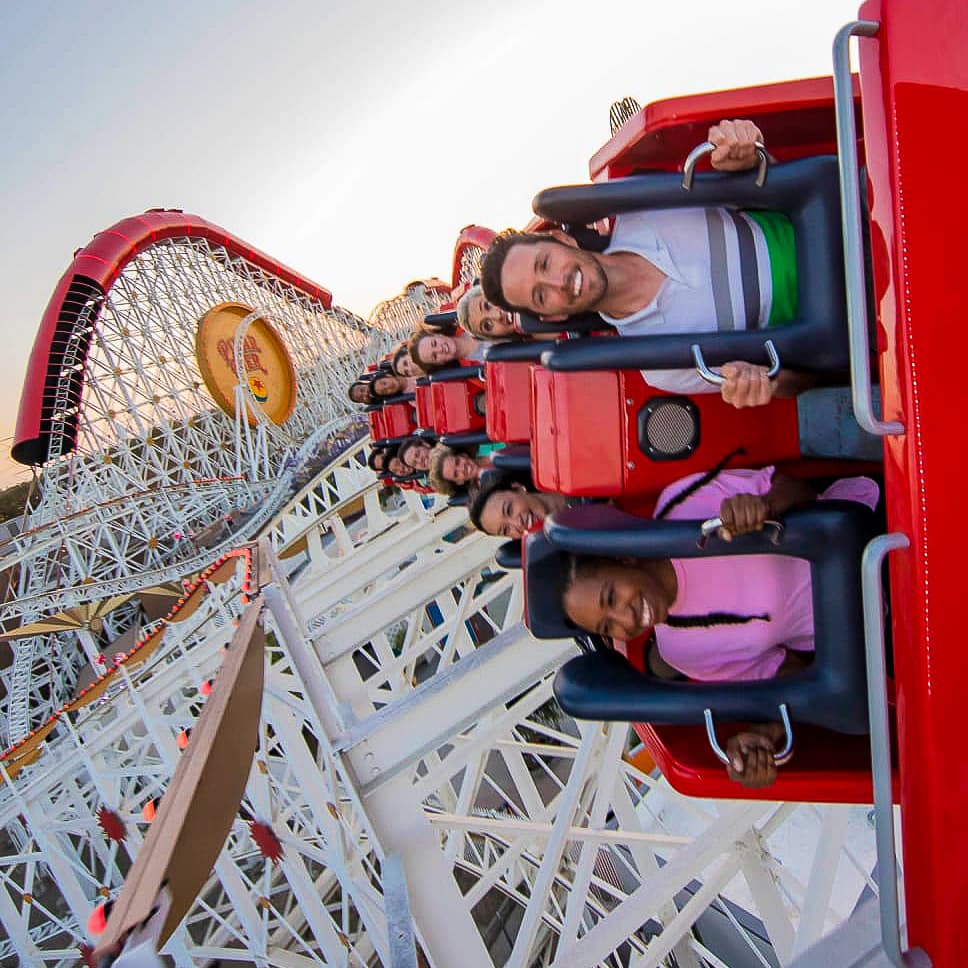

Glad to hear the ride was smooth. I’ve always wanted to visit the Volcanoes National park.
Rosey – I hope you can visit this amazing National Park someday!
We would love to take our kids to Hawaii Volcanoes National Park as it sounds amazing. I love learning about vacation destinations that are family-friendly.
I want to try Ohelo cafe! Seems like a good place to get some slices of pizza! I should definitely do a gastronomic adventure there soon!
Just recently, there was a chance one of my loved ones was going to be stationed in Hawaii. It was about the time they were having tropical storms and volcanic eruptions. I had been excited for them up until that point, then the dangers became very real. It is such a beautiful place though.
How exciting for your loved one! Thankfully, it seems the dangers of living on much of the Big Island are limited to Zone 1 areas and warnings are given to evacuate as necessary. I hope you’ll be able to visit Hawaii to see your loved one during their time on the island!
What an exciting, and nerve wracking, experience. Your pictures are absolutely gorgeous. I would love to visit Hawaii someday.
Whoahhh that looks like an insane adventure! How thrilling for the entire family. We would love a helicopter ride to volcanoes on our upcoming Hawaii trip too!
Dooooo it! Seriously. You will not regret it!
Amazing photos and so inspirational! I would be afraid of motion sickness too, but good to know it’s not that bad!
If you are prone to motion sickness, my advice is to skip the boat tour and go for the helicopter tour when in Hawaii!
What an awesome experience for the family! The new area formed by the lava flow was a sight to see. How nice it was for you to take a helicopter tour to view the volcano craters. I am sure your kids would treasure this experience their entire life.
It really was amazing…lava or no lava!
This looks like such an amazing experience! I have never been on a helicopter before but I am sure this tour was breathtaking!
If you get a chance to take a helicopter flight, I highly recommend going for it!
Pinning this because this is on my Hawaii bucket list. You’ve got some great money saving tips that I’ll need to remember for when we do get around to planning out our Hawaiian vacation. Your photos are gorgeous too!
Thank you for pinning and commenting! I hope you can scratch this one off your bucket list soon!
Oh my gosh, that looks incredible! What an amazing experience. I would love to take my family to see those sights and doing it by a helicopter–how cool!
I’m so glad we went for both the helicopter tour AND the walking tour! Together, they provide so much insight to the Hawaiian Islands!
Oh I would LOVE to do this some day! The aerial views are breathtaking! What an incredible experience!
Beyond incredible! Highly recommend the helicopter tour AND the walking tour!
You guys had so much fun!! This is a great experience I would love to take my family on!
It really was amazing. I have been wanting to visit Volcanoes National Park for years and it did not disappoint!